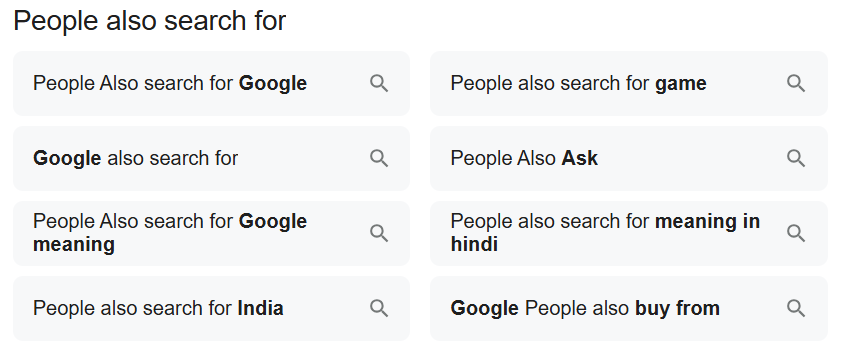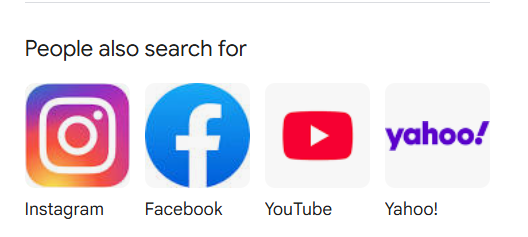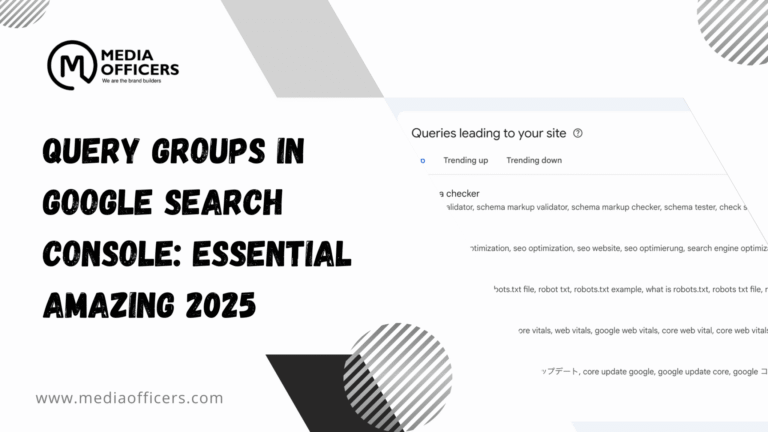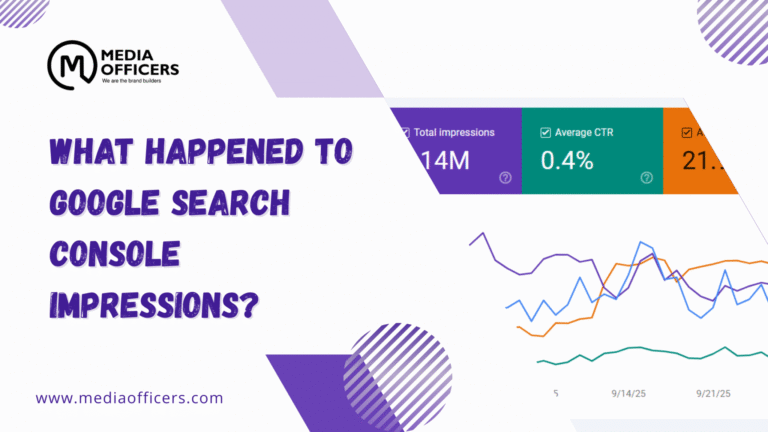If you’re ignoring People Also Search For (PASF), you’re missing out on one of Google’s most powerful free features. It’s a treasure trove of insight into user behavior, intent, and search patterns.
With AI reshaping search engines and conversational search on the rise, PASF matters more than ever. Understanding and leveraging these related queries can elevate your SEO strategy, from building smarter content clusters to optimizing for voice search and beyond.
Curious? Here’s what you need to know about People Also Search For and how to use it to create content that resonates better with your audience and ranks higher on Google.
What Is People Also Search For?

“People Also Search For” (PASF) is a Google feature that displays related search terms users might look up after visiting or bouncing from a search result. It’s Google’s way of saying, “Here’s what your audience wants to know next.”
Where Do You See People Also Search For (PASF)?
PASF generally appears in:

- Search Engine Results Pages (SERPs): Beneath some search results, especially when users bounce back after clicking on a result.
- Related Searches: Found at the bottom of Google search pages.
- Search Refinements: Provided in some queries as suggestions to further refine the query.
PASF is frequently confused with “People Also Ask” (PAA), but the two are distinct:
- People Also Search For (PASF): Focuses on related queries users explore after their initial search.
- People Also Ask (PAA): Displays a list of questions directly answering the initial query.
Want to optimize for PASF and capture related queries that Google shows? Keep reading.
Box Snippet:
“People Also Search For” is a Google feature that shows related queries users often look up after visiting or bouncing from a search result.
Why People Also Search For (PASF) Is Critical in the AI Mode Era

Search engines are evolving, and AI is at the core of this transformation. AI Mode, increasingly adopted by modern search platforms, uses PASF data to understand what users are looking for next and how intent clusters form. Here’s why PASF plays a vital role now:
1. PASF and Intent Clusters
AI tools analyze query patterns to group related concepts into “intent clusters.” PASF provides valuable data for these clusters, helping AI suggest more tailored results.
For example, a search for “SEO strategies” may surface PASF terms like “on-page SEO tips” or “how to boost domain authority,” informing intent clusters.
2. Conversational Search
AI-driven conversational interfaces, like Google Bard and ChatGPT, rely heavily on predictive intent data to answer follow-up questions. PASF is a key piece of this puzzle, allowing these tools to mimic human-like understanding of search behavior.
3. Deep Search Suggestions
Deep Search, or long-form intent mapping by AI, relies on PASF keywords to create smarter search pathways. Think of PASF as Google offering you a map to what users are truly searching for next.
Pro-tip: PASF is Google’s way of saying, “Here’s what users are really thinking about.”
How to Use People Also Search For (PASF) to Build Smarter Content
Using PASF isn’t just about sprinkling keywords into your content. It’s about strategically creating value-driven, intent-focused pages. Here’s how to do it:
1. Use People Also Search For (PASF) Keywords as Subheadings
Turn PASF terms into H2s and H3s to answer user intent directly. This improves readability and increases your chances of appearing in featured snippets.
2. Build Topic Clusters
Create clusters of interconnected content based on PASF terms. Each blog post or webpage addresses a unique aspect of the related search query while linking to others in the cluster.
3. Use People Also Search For (PASF) Phrases as Internal Links
Add internal links between PASF-focused content to create a logical user navigation flow within your site.
Example Table
| PASF Phrase | Content Type | Internal Linking Opportunity |
|---|---|---|
| “What is Google RankBrain” | Explainer Blog | Link from SEO 101 page |
| “How to reduce bounce rate” | Case Study | Link from analytics guide |
By structuring your content around PASF, you’ll enhance user experience and improve search engine rankings.
How to Find People Also Search For Keywords
Locating PASF terms isn’t hard, but it does require a bit of digging. Here are efficient ways to identify PASF keywords:
1. Check Google Search Results
Perform a search and analyze the “People Also Search For” suggestions under results in the SERPs. Adjust based on bounce behavior for even deeper insights.
2. Use These Tools
- Keywords Everywhere: Displays PASF data directly in your search results.
- AlsoAsked: Visualizes PASF-related queries based on Google’s questions.
- Ahrefs or SEMrush: Use these SEO tools to track and analyze PASF terms.
3. Leverage AI Prompts
Use ChatGPT or similar tools with prompts like, “What are PASF keywords for [primary keyword]?”
4. Chrome Extensions
Install Chrome extensions designed to scrape PASF data, saving hours of manual research.
Optimizing PASF for Voice and Deep Search
Voice search is on the rise, and PASF phrases provide the natural language queries needed for deeper optimization. Here’s how you can make the most of PASF for voice SEO:
1. Rewrite FAQs Using PASF Queries
Simplify FAQs by rewriting them with a conversational tone using PASF phrases. For example, “What is keyword intent?” can be rewritten as, “How do I know the intent behind a keyword?”
2. Build Conversational Content
Craft answers that resemble natural conversations to align with voice search queries, satisfying AI Mode intent clusters.
3. Use Schema Markup
Leverage FAQ and HowTo Schema using PASF-based phrasing to enhance your chances of appearing in voice search results.
Monitoring the Impact of PASF Optimization
Once you’ve implemented PASF strategies, it’s important to track your results. Here’s how:
- Monitor Long-Tail Page Impressions: Use Google Search Console to track impressions for longer and more specific search queries.
- Track Engagement Metrics: Check bounce rates, scroll depth, and “engaged sessions” in Google Analytics.
- Prepare for AI Mode Insights: Google Search Console is expected to offer AI Mode stats soon, so be ready to leverage this data to refine your strategies.
—
Unlock the Potential of PASF for Your SEO Strategy
People Also Search For is far more than a simple feature. It’s a roadmap to user intent, a key to optimizing for voice and deep search, and a foundation for creating smarter content clusters.
Start by revisiting your older content and integrating PASF terms as subheadings, internal links, or FAQs. And if you need help building PASF-driven content clusters, we’re here to assist.
Want to take your SEO to the next level? Check out our PASF keyword generator or chat with our team today!
FAQ Section
What does People Also Search For mean on Google?
PASF refers to Google’s feature that shows related queries users often explore after performing a search.
How is PASF different from People Also Ask?
PASF focuses on related searches, while PAA lists questions specifically related to the current query.
Can I rank using PASF terms alone?
While PASF terms help refine your content strategy, combining them with broader SEO practices ensures better results.
How do I optimize for AI Mode using PASF?
Use PASF intent clusters to guide conversational content, FAQs, and schema-markup-based pages.
Are PASF keywords good for voice search SEO?
Yes! PASF keywords mirror natural language and are ideal for voice search optimization.








